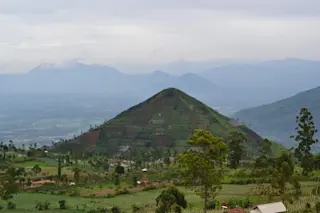Conventional wisdom says early Christians scurried around an underground network of private homes and clandestine sites to avoid being thrown to the lions until Roman emperor Constantine legalized the religion in A.D. 313. But a 30-by-15-foot mosaic floor—all that remains of what may be one of the oldest churches ever found—suggests Christians were better tolerated than most people thought.
Mosaic fish symbols and references to a table donated for "the God Jesus Christ" firmly identify the building, located near Megiddo, Israel, as a place of Christian worship. Although the age of the structure hasn't been verified, epigrapher Leah Di Segni of the Hebrew University of Jerusalem says that the phrasing and the lettering style of the inscriptions support the idea that the church predates Roman approval. Moreover, the use of a fish motif rather than a cross, which became the dominant Christian symbol under Constantine, also suggests the building is ...















